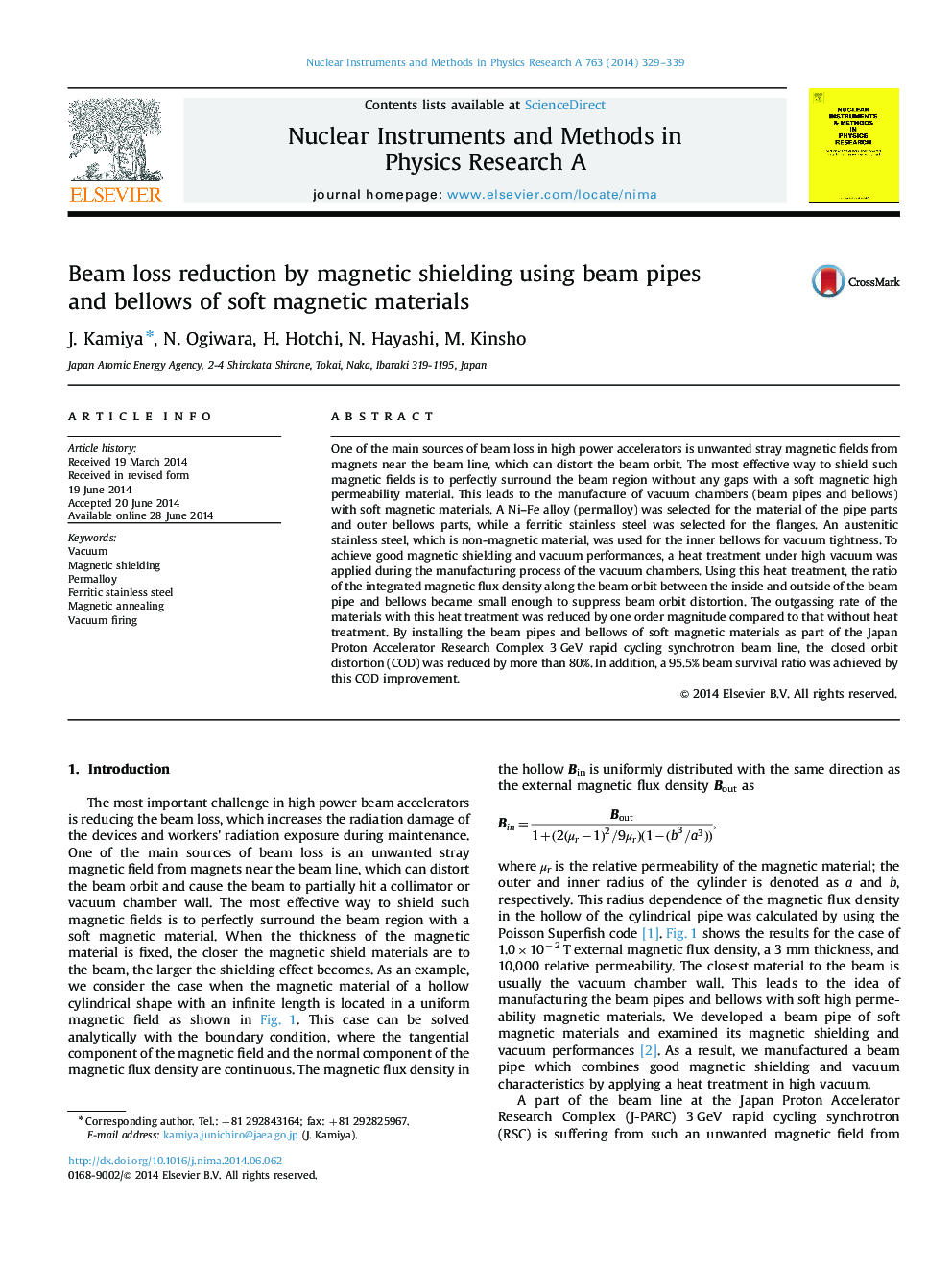| Article ID | Journal | Published Year | Pages | File Type |
|---|---|---|---|---|
| 8175741 | Nuclear Instruments and Methods in Physics Research Section A: Accelerators, Spectrometers, Detectors and Associated Equipment | 2014 | 11 Pages |
Abstract
One of the main sources of beam loss in high power accelerators is unwanted stray magnetic fields from magnets near the beam line, which can distort the beam orbit. The most effective way to shield such magnetic fields is to perfectly surround the beam region without any gaps with a soft magnetic high permeability material. This leads to the manufacture of vacuum chambers (beam pipes and bellows) with soft magnetic materials. A Ni-Fe alloy (permalloy) was selected for the material of the pipe parts and outer bellows parts, while a ferritic stainless steel was selected for the flanges. An austenitic stainless steel, which is non-magnetic material, was used for the inner bellows for vacuum tightness. To achieve good magnetic shielding and vacuum performances, a heat treatment under high vacuum was applied during the manufacturing process of the vacuum chambers. Using this heat treatment, the ratio of the integrated magnetic flux density along the beam orbit between the inside and outside of the beam pipe and bellows became small enough to suppress beam orbit distortion. The outgassing rate of the materials with this heat treatment was reduced by one order magnitude compared to that without heat treatment. By installing the beam pipes and bellows of soft magnetic materials as part of the Japan Proton Accelerator Research Complex 3Â GeV rapid cycling synchrotron beam line, the closed orbit distortion (COD) was reduced by more than 80%. In addition, a 95.5% beam survival ratio was achieved by this COD improvement.
Related Topics
Physical Sciences and Engineering
Physics and Astronomy
Instrumentation
Authors
J. Kamiya, N. Ogiwara, H. Hotchi, N. Hayashi, M. Kinsho,
